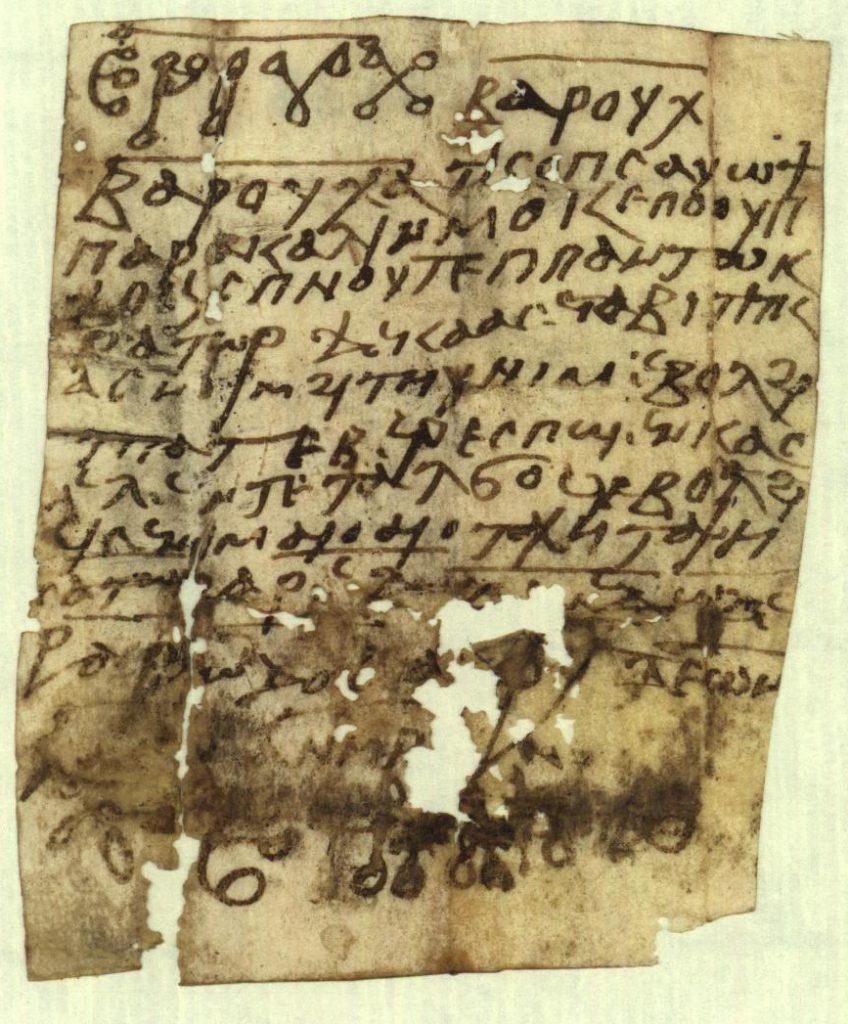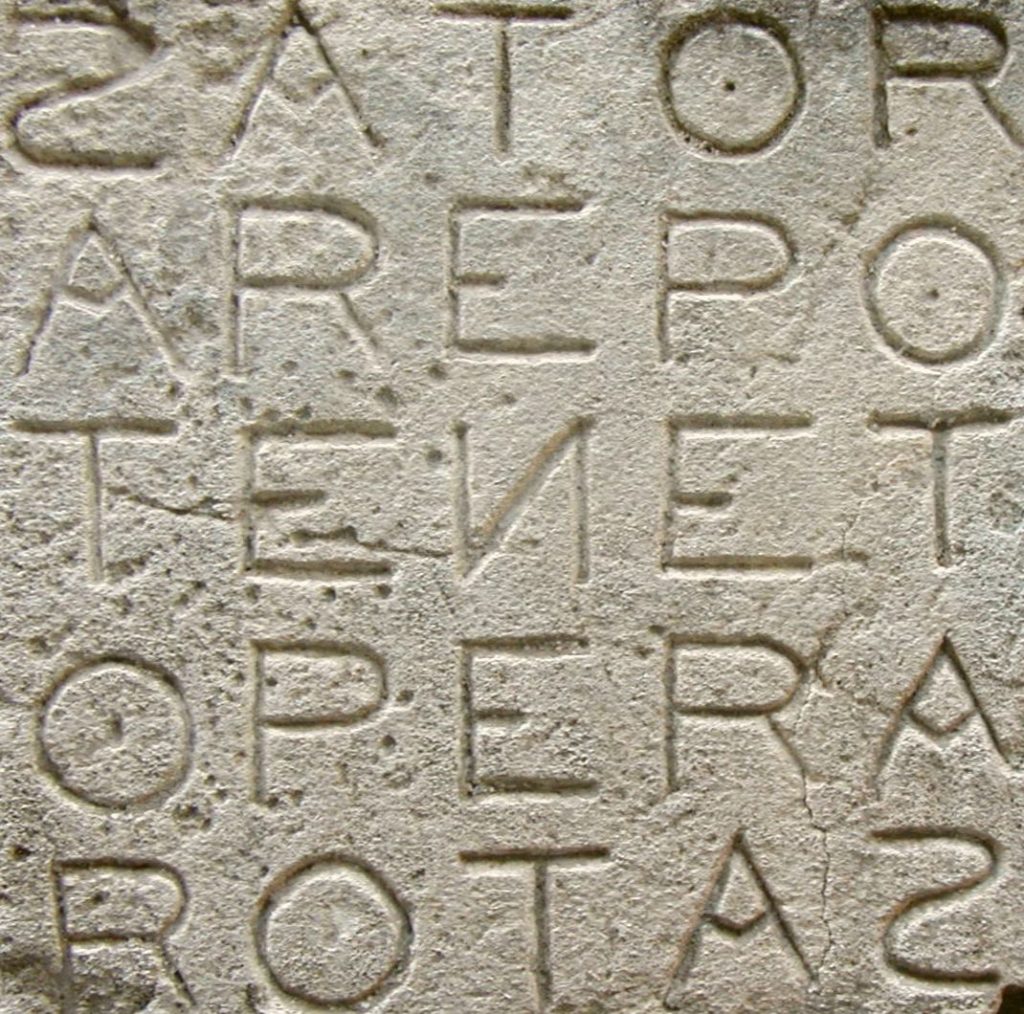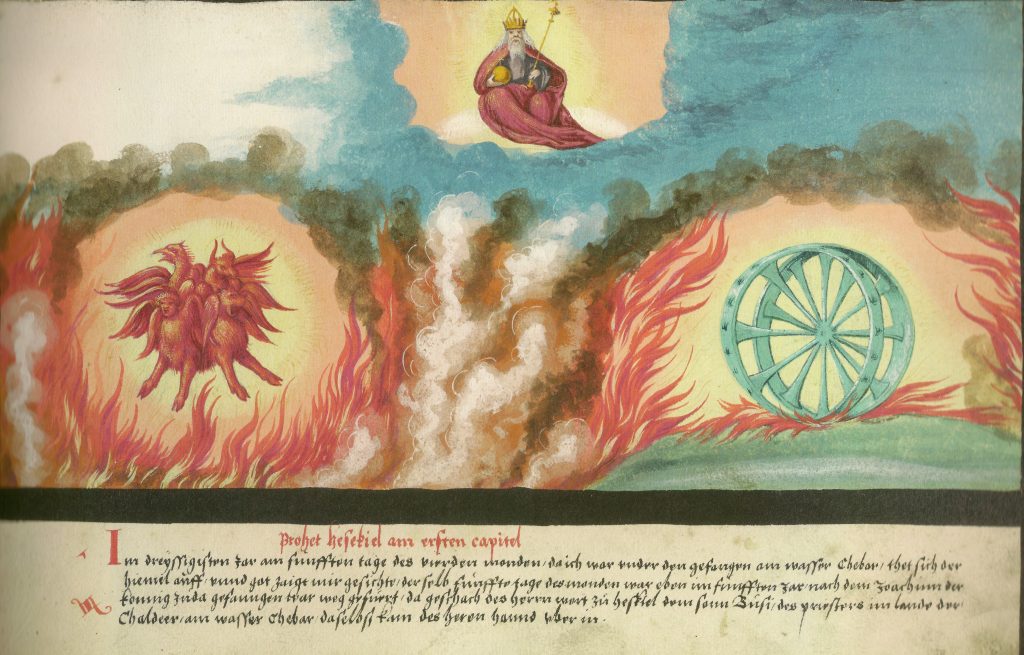This week’s post takes a deep dive into another healing amulet from Kyprianos, our database of Coptic magical texts. P. Vienna K 08638, now housed in the collection of the Nationalbibliothek in Vienna, is a small rectangular sheet of parchment, 8.5cm in height and 6.8cm in width. The recto (front) of the sheet was filled with an applied text, whose 13 lines covered the surface, with the name of its client written upon it. With three clear vertical creases and perhaps five horizontal creases, the sheet was perhaps folded from the outside in, leaving all of its outer edges folded within a neat parcel of about 2cm by 2.5cm. This parcel was then presumably bound to or carried by the same Beres, the son of Kasele, who is named in the text to be healed from “every sickness”. First edited by Jakob Krall in 1892, Viktor Stegemann re-edited the text in 1934, dating it to the 10th century CE. An English translation by Marvin Meyer appeared in Ancient Christian Magic: Coptic Texts of Ritual Power.

Eroukh, Baroukh, Baroukha
P. Vienna, Nationalbibliothek K 08638 Pap lines 1-13
I entreat and I invoke you today, Oh Lord God Almighty, that you take every pain and every wind away from the leg of Beres, the son of Kasele, and that you heal him from every sickness, yea, yea, quickly, quickly!
Satōr, Aredō, Dened, Ōdera, Rōdos
Alpha, Leōn, Phōnē, Anēr
a e ē i o u ō
The amulet opens with three magical names. The first “Eroukh” is written in what are known as “ring signs”, characters that are often derived from letters of the Greek and/or Coptic alphabets but which have rings at the end of the strokes that write them. This often blurs the boundary between text and image, whereby words written in “ring signs” are not always decipherable in any particular language. These “ring signs” are one type of kharaktēres, a term which encompasses a host of ritually powerful images. The second – “Baroukh” – and third – “Baroukha” – are instead written in regular Coptic script rather than “ring signs”, with lines drawn across the top of them, which also serves to mark them out as powerful magical names. The first and third names are plays on the second, normalised as “Baruch”, a Hebrew name meaning “blessed”. The most famous Baruch was the scribe of the prophet Jeremiah, who was a prominent character in his own right in later pseudepigraphical writings, and a powerful name invoked in Coptic magical texts.
The invocations to the “Lord God Almighty” follow – the first using a term from Egyptian-Coptic (sops) and the second using a term borrowed from Greek (parakali). These invocations specify that it is on one and the same day as the text is recited that God is to heed the commands. Those commands are to “take away every pain and every wind” from the pat (ⲡⲁⲧ), which can mean “leg”, “knee”, or “foot” in Coptic. So, although we are not certain exactly which body part of Beres was afflicted, we know that this affliction was seen as both a “pain” and a “wind”. The belief that bad wind, or air, was a cause of disease is a cross-cultural phenomenon. In Egypt, older Egyptian tjau (ṯꜣw), the predecessor of Coptic tēou (ⲧⲏⲟⲩ), appears as a cause of disease, while a 19th century traveller to Egypt even reports that “plague” was seen to have been caused by winds which could be avoided by shutting oneself indoors (Wilson 1831: p. 223).
The second command then specifies that this will heal Beres “from every sickness”, that is, not just his afflicted body part! But not only that, that this will occur right away, with the command closing with the common formula “Yea, yea! Quickly, quickly!” – in a combination of terms from Egyptian-Coptic (aio) and borrowed from Greek (takhē).
A series of powerful magical names follow, recognisable as the Sator Arepo formula – in its full normalised form: Sator, Arepo, Tenet, Opera, Rotas, which was discussed in an earlier post. When assembled in a square, the formula forms a palindrome that can be read in several directions. The earliest attested version comes from Pompeii, so the formula was probably originally Latin, but it was transmitted into Greek, and from Greek into Coptic. There are numerous proposals of where this formula comes from, many of which are still debated. But regardless of its etymology, its distribution throughout magical texts of the 1st millennium CE especially, and across Egypt, the Near East, and Europe show its popularity and assumed power. One interesting feature in this, and other Coptic texts, is that it is misspelled. The Latin letter P was written as ⲡ (pi) in Greek and Coptic, which was easily confused with ⲧ (tau). Since Coptic didn’t distinguish the sounds /t/ and /d/, ⲧ was then often written as ⲇ (delta), so that the original opera is written here as ōdera.

After this, another powerful series of names follows, normalised as Alpha, Leon, Phone, Aner. These names are those of the four living creatures worshipping around the throne of God that are mentioned in scripture: the ox was named the Hebrew word “Aleph” (meaning ox); the lion was named the Greek word “Leon” (meaning lion); the eagle was named the Greek word “Phone” (meaning voice); and the man was named the Greek word “Aner” (meaning man). In Ezekiel (1:14) these creatures are described as carrying the throne of God, each having four faces, four wings but with human hands, with the feet of a calf, shining like bronze, and darting to and fro like flashes of lightning. Of most direct relevance 10th century CE Egypt though is their presence in Revelation (4:6-8), which also describes their role as the throne-bearers of God.

This combination of powerful names also occurs in P. Vienna K 7093, an applied healing amulet for a woman named Kirahēu, the daughter of Marihaam. There the combination of the Sator Rotas palindrome and Alpha Leon series is found both at the beginning at the end of the written text, that is, framing the top and the bottom of the paper the text was written on. We have also already seen the Alpha Leon series in P. Heidelberg Kopt. 544, an applied amulet to heal Ahmed from cold and fire. These examples suggest that well into the Islamic Period these formulae were considered to have had particular potency in healing people of their afflictions. But not only that, both formulae are found in P. Yale 1792, a papyrus amulet to be worn to ward off all poisonous snakes, that is, in a preventative recipe. This further example suggests that these series of formulae were seen to have both a preventative protective and a responsive healing function.
The text of the amulet concludes with the seven vowels of the Greek, and therefore Coptic, alphabet. These are again written as “ring signs”, marking them out as a powerful combination of text and image – the recitation and writing of the vowels being ubiquitous among Graeco-Egyptian and Coptic magical practices. As a result, the composition of the amulet opens with rings signs at the top and closes with them at the bottom, framing the inscribed text which, when recited, commanded healing, and, when written down and worn or carried, ensured this healing.
Although brief, this text is yet another example of the more than 500 magical texts in Coptic that we are editing as part of our project, and another example of a story of an individual from centuries ago which we are (re)discovering as part of our work. We hope that you are enjoying these stories, and we will continue to share them with you in this and related series of posts in the future.
Bibliography
Krall, Jakob. “Koptische Amulette.” Mitteilungen aus der Sammlung der Papyrus Erzherzog Rainer 5 (1892): 115–122, p. 121.
Meyer, Marvin W., and Richard Smith. Ancient Christian Magic: Coptic Texts of Ritual Power. Princeton (New Jersey): Princeton University Press, 1999, no. 46, p. 92.
Stegemann, Viktor. Die koptischen Zaubertexte der Sammlung Papyrus Erzherzog Rainer in Wien. Sitzungsberichte der Heidelberger Akademie der Wissenschaften. Philosophisch-historische Klasse, 1933-34 n°1. Heidelberg: Carl Winters Universitätsbuchhandlung, 1934, p. 22, 52-53, no. 28 [98] [source]
Wilson, William Rae. Travels in the Holy Land, Egypt, &c. Vol. II. 1831. London: Longman, Rees, Orme, Brown, and Green. [source]

4 Comments
Giovanni Fresa
I’m a lawyer but I love history. I studied Roman Greek and Egyptian history .
Lately I start to study PGM and I’m fascinating by the syncretism of the religions of the Ptolemaic and Roman era,
Giovanni Fresa
I’m a lawyer but I love history. I studied Roman Greek and Egyptian history .
Lately I start to study PGM and I’m fascinating by the syncretism of the religions of the Ptolemaic and Roman era, thank you so much for your wonderful works
Giovanni Fresa
thank you so much for your wonderful works
Pingback: